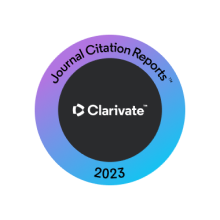Abstract
Background There is conflicting evidence regarding the success of the Maze procedure to restore sinus rhythm in patients with rheumatic heart disease. Hence, the aim of our study was to describe the results of surgical ablation for atrial fibrillation in patients with rheumatic heart disease undergoing cardiac surgery. Methods This is a retrospective study that included adult patients with rheumatic heart disease who underwent surgical ablation for atrial fibrillation. The ablation lesions were performed using monopolar radiofrequency ablation in all patients. Results Fifty-seven consecutive patients were included in the study. Cox Maze IV was performed in 44 patients (77%), while left-sided surgical ablation was performed in 10 patients (17%) and pulmonary vein isolation in 3 patients (5%). The percentage of patients who were in sinus rhythm on discharge, at 1-month, at 3-months, 6-months and 12-months follow up were 56%, 54%, 52%, 56% and 46% respectively. Complete heart block occurred in 21 patients (44%), but only 15 of them (26%) required permanent pacemaker insertion. Freedom from composite endpoint of death, stroke, and readmission for heart failure was 78% at one-year follow up. Conclusion Despite the suboptimal rates of sinus rhythm at the intermediate and long term follow up, surgical ablation of atrial fibrillation in patients with rheumatic heart disease should continue to be performed. Continuation of Class III antiarrhythmic medications and early intervention for recurrent atrial fibrillation is crucial to the success of this procedure and for maintenance of higher rates of sinus rhythm at intermediate and long-term follow up.
Recommended Citation
Albacker, Turki B.; Alaamro, Sultan; Alhothali, Abdulaziz M; Arafat, Amr A; Algarni, Khaled D; Eldemerdash, Ahmed; and Bakir, Bakir M
(2022)
"Results of Surgical Ablation for Atrial Fibrillation in Patients with Rheumatic Heart Disease,"
Journal of the Saudi Heart Association: Vol. 34
:
Iss.
4
, Article 4.
Available at: https://doi.org/10.37616/2212-5043.1321
Creative Commons License

This work is licensed under a Creative Commons Attribution-Noncommercial-No Derivative Works 4.0 License.




